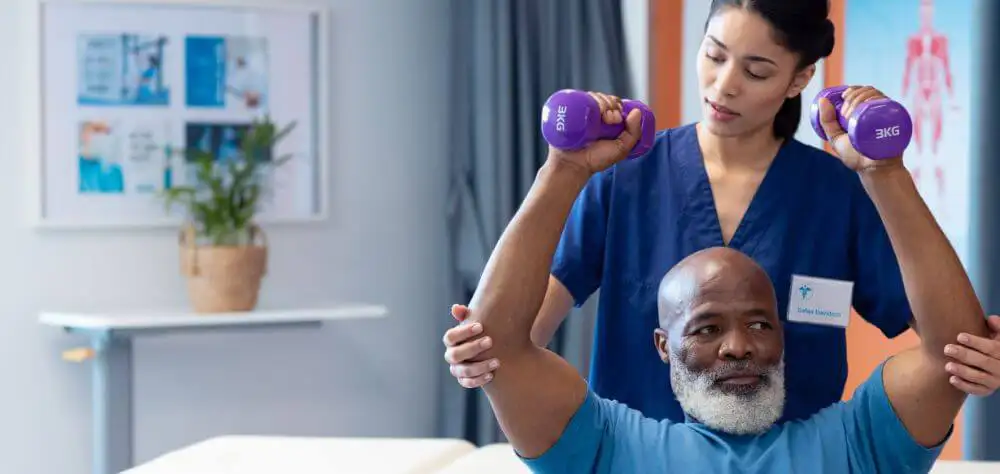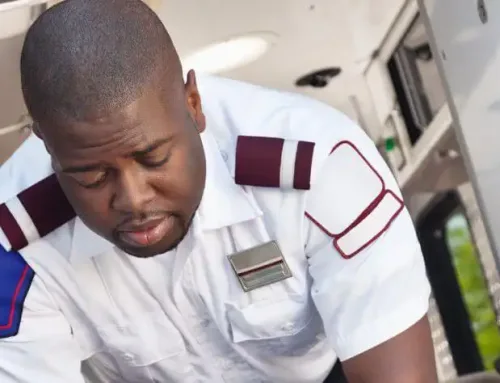The Best Degree for Physical Therapy: Building the Foundation for Success
The best degree for physical therapy is one that builds a strong foundation in anatomy, physiology, biomechanics, and patient care—all essential for success in a Doctor of Physical Therapy (DPT) program. As demand for physical therapists continues to grow, choosing the right undergraduate path can significantly impact your DPT school acceptance and career readiness.
A well-structured bachelor’s degree should include science coursework, hands-on experience, and a deep understanding of movement and rehabilitation. Whether you choose Health Sciences, Kinesiology, or Biology, selecting a major that aligns with DPT prerequisites will make your transition smoother. Let’s explore which degrees best prepare you for physical therapy school and why they matter.
Thinking About a PT Career? Here’s What the Job Really Looks Like
Physical therapists are movement specialists who help patients recover from injuries, manage chronic pain, and regain mobility. Whether working with athletes, post-surgery patients, or individuals with disabilities, their goal is to restore function, independence, and quality of life.
With rising demand and strong job growth, physical therapy offers a rewarding career path for those passionate about movement science and patient care. But what does the job really involve? Let’s take a closer look at what physical therapists do and why their work is so essential.
Responsibilities of a Physical Therapist
PTs use a variety of techniques to help patients recover from injuries, surgeries, or chronic conditions. Their work includes:
- Diagnosing movement dysfunctions through physical assessments and medical history.
- Developing rehabilitation treatment plans tailored to each patient’s needs.
- Using manual therapy, exercise, and assistive devices to improve mobility and reduce pain.
- Educating patients on injury prevention, posture, and mobility improvement techniques.
Job Outlook and Salary
The demand for physical therapists is on the rise—according to the U.S. Bureau of Labor and Statistics (BLS) employment is projected to grow 14% from 2023 to 2033, significantly faster than other fields. With a median salary of $99,710 per year, physical therapy offers both job stability and personal fulfillment for those dedicated to helping others regain movement and independence.
Your First Step to Becoming a Physical Therapist: Choosing the Right Degree
Physical Therapy (DPT) program, students must complete a bachelor’s degree with specific science prerequisites. Choosing a major that aligns with PT school requirements can strengthen your application and make coursework easier to manage.
Not all undergraduate degrees prepare students equally. Some provide a direct path to DPT programs, while others may require extra coursework to meet science and clinical experience requirements.
Understanding PT School Requirements
To apply to a Doctor of Physical Therapy (DPT) program, students need a bachelor’s degree plus specific prerequisite coursework. Most programs set a minimum GPA of 3.0, but competitive schools prefer 3.5 or higher.
Typical DPT prerequisites include:
- Biology General, Human Anatomy & Physiology, Microbiology
- Chemistry General & Organic Chemistry
- Physics Physics I & II
- Psychology & Behavioral Sciences Understanding patient behavior and mental health
- Statistics or Research Methods Critical for evidence-based practice
Completing these courses during undergrad ensures a smooth transition to PT school without extra coursework delays.
Common Pre-PT Degrees & Their Advantages
Students on the physical therapy path typically choose from a few key undergraduate majors, each with unique benefits.
- Health Sciences: Offers a strong foundation in biomedical sciences and patient care, making it an ideal pre-PT choice.
- Exercise Science / Kinesiology: Focuses on human movement, sports rehab, and biomechanics, great for those interested in sports or orthopedic physical therapy.
- Biology: Covers general science but lacks hands-on patient care training—students may need additional experience before applying.
- Psychology: Beneficial for PTs working in rehabilitation, neurotherapy, and chronic pain management.
Choosing a major that aligns with PT school requirements and offers clinical exposure gives students the best chance of gaining admission to a competitive DPT program and excelling in their careers.
Want to Get Into PT School? Here’s How to Strengthen Your Application
Getting into a Doctor of Physical Therapy (DPT) program is competitive, and having a strong GPA isn’t enough. Admissions committees look for well-rounded candidates with hands-on clinical experience, extracurricular involvement, and solid test scores.
If you’re aiming for PT school acceptance, it’s important to plan ahead, gain relevant experience, and build a compelling application that highlights your dedication to the field. Here’s how to set yourself apart from the competition.
Gaining Clinical Experience & Observation Hours
Most PT schools require 100-500 hours of direct observation in a physical therapy setting. Schools want applicants who have seen PTs in action, understand the profession’s demands, and are committed to patient care.
Top places to shadow or gain hands-on experience include:
- Outpatient physical therapy clinics: Exposure to post-surgical rehab, chronic pain management, and injury recovery.
- Hospitals & rehabilitation centers: Experience with stroke recovery, neurological rehab, and inpatient therapy.
- Sports medicine facilities: Hands-on learning in athletic rehab, injury prevention, and performance recovery.
Volunteering & Extracurricular Activities
Beyond observation hours, admissions committees value community involvement. Joining pre-PT clubs, student organizations, and national associations like the American Physical Therapy Association (APTA) shows commitment to professional development.
Other ways to strengthen your application include:
- Volunteering with adaptive sports programs or rehab centers to gain hands-on experience with diverse patient populations.
- Participating in health and wellness initiatives to demonstrate leadership and passion for physical well-being.
Preparing for the GRE
Most DPT programs require the GRE (Graduate Record Examination) as part of their admissions process. If your schools require it, studying in advance is key.
- Recommended prep time: 3-6 months before applying.
- Key areas to focus on: Verbal reasoning, quantitative reasoning, and analytical writing.
- Best strategies: Take practice exams, review high-yield topics, and use prep books to improve your score.
A strong PT school application isn’t built overnight. By gaining clinical experience, engaging in meaningful extracurriculars, and preparing for admissions tests, you’ll position yourself as a standout candidate ready for the next step in your physical therapy career.
The Degree That Prepares You for PT School—And Beyond
Getting into PT school takes more than just passion—you need the right coursework, hands-on experience, and a strong academic foundation. At SCU, our Bachelor of Science in Health Sciences (BSHS) is designed for students who are serious about pursuing a DPT degree.
Program Overview
Our BSHS is built for pre-PT students who want to complete their DPT prerequisites while gaining real-world healthcare knowledge.
- Fully online, flexible curriculum—study full-time or part-time at your own pace.
- Core Science Foundation: Covers biological sciences, human health, and quantitative reasoning, ensuring a strong academic base for DPT programs.
- Communication & Professionalism: Develops skills in patient interaction, healthcare ethics, and interdisciplinary teamwork.
- Healthcare-focused coursework ensures students are ready for the clinical demands of PT school.
Specialized Concentrations
We offer specialized concentrations that align with physical therapy school requirements, helping students gain in-depth knowledge in key areas.
- Functional Anatomy: Focuses on musculoskeletal structure, movement science, and rehabilitation. Ideal for students planning to enter PT, sports medicine, or rehabilitation therapy.
- Integrative Nutrition and Wellness: Explores the role of nutrition in injury recovery and physical therapy. Great for future PTs working with athletes, chronic pain patients, and post-surgical rehabilitation.
- Health Promotion: Introduces evidence-based integrative health and wellness strategies that support rehabilitation, injury prevention, and patient-centered care—crucial areas for future physical therapists.
Want more options? Explore all SCU concentrations here.
Enhanced Learning for PT School Preparation
We prioritize deep learning over rushed memorization, ensuring students gain a thorough understanding of key scientific concepts. By taking only two courses per term, students can focus on mastering complex anatomy and physiology, leading to better retention and stronger preparation for DPT coursework and clinical applications.
Flexible Online Study for Working Students
Many of our students balance clinical experience, work, and school. Our fully online BSHS program makes it possible to:
- Study full-time or part-time based on your schedule.
- Gain real-world healthcare experience while completing coursework.
Fixed-Rate Tuition & Scholarships
We make quality education affordable with our Fixed-Rate Tuition Guarantee, meaning students pay one transparent rate from start to finish—no hidden costs or surprise increases.
We also offer multiple scholarship opportunities to help eligible students reduce costs while focusing on preparing for PT school.
Start Your Journey to PT School with SCU
Choosing the best degree for physical therapy is the first step toward a rewarding career in rehabilitation and movement science. A strong undergraduate foundation in health sciences, anatomy, and biomechanics ensures you’re well-prepared for DPT coursework, clinical rotations, and patient care. With the right education, you’ll set yourself apart in competitive PT school admissions.
At SCU, our Bachelor of Science in Health Sciences (BSHS) is designed to give students the coursework, flexibility, and specialized concentrations needed to excel in DPT programs and beyond. If you’re ready to start your journey toward a successful career in physical therapy, review our admissions and apply today.
FAQs
What is the best degree for physical therapy?
The best degree for physical therapy is one that includes DPT prerequisite coursework, such as Health Sciences, Exercise Science, Kinesiology, or Biology. Health Sciences is often the most well-rounded option, as it covers anatomy, biomechanics, and patient care principles essential for PT school.
Do I need a specific bachelor’s degree to apply to PT school?
Not necessarily, but you must complete prerequisite courses in biology, chemistry, physics, anatomy, and psychology. Many students major in Health Sciences, Kinesiology, or Exercise Science because they naturally align with PT school requirements.
What GPA do I need for PT school?
Most DPT programs require a minimum GPA of 3.0, but competitive schools prefer 3.5 or higher. If your GPA is lower, strong GRE scores, clinical experience, and recommendation letters can help improve your chances.
How does SCU’s BSHS program prepare students for PT school?
Our Bachelor of Science in Health Sciences (BSHS) provides a flexible online format, and offers concentrations in movement science, functional anatomy, and integrative health, making it an ideal pre-PT degree.
What financial aid options are available for SCU’s BSHS program?
We offer a Fixed Rate Tuition Guarantee, ensuring transparent pricing from start to finish, along with multiple scholarships to help students fund their education. Visit our financial aid page to learn more!
Related Posts





